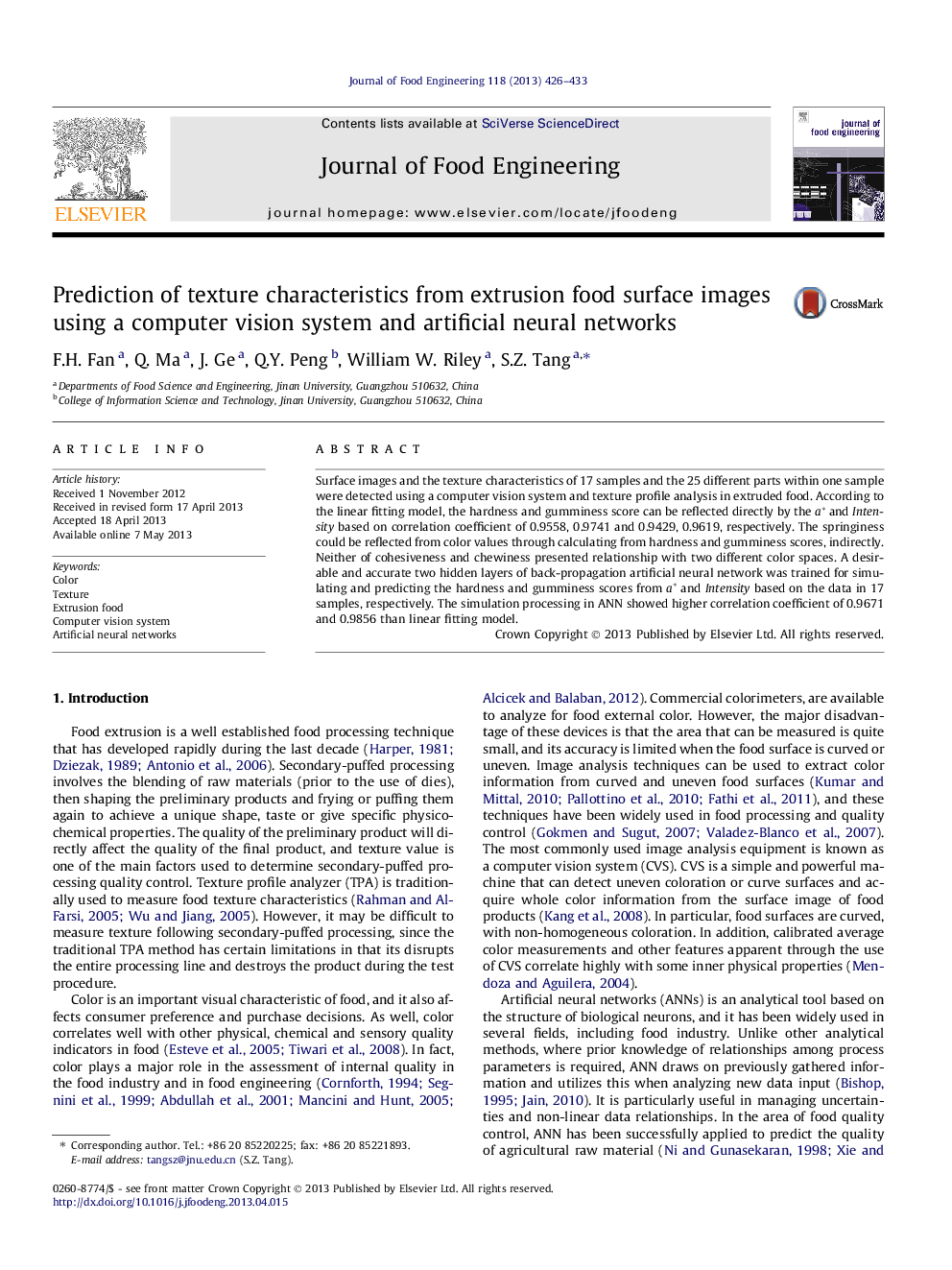| Article ID | Journal | Published Year | Pages | File Type |
|---|---|---|---|---|
| 10277626 | Journal of Food Engineering | 2013 | 8 Pages |
Abstract
Surface images and the texture characteristics of 17 samples and the 25 different parts within one sample were detected using a computer vision system and texture profile analysis in extruded food. According to the linear fitting model, the hardness and gumminess score can be reflected directly by the a* and Intensity based on correlation coefficient of 0.9558, 0.9741 and 0.9429, 0.9619, respectively. The springiness could be reflected from color values through calculating from hardness and gumminess scores, indirectly. Neither of cohesiveness and chewiness presented relationship with two different color spaces. A desirable and accurate two hidden layers of back-propagation artificial neural network was trained for simulating and predicting the hardness and gumminess scores from a* and Intensity based on the data in 17 samples, respectively. The simulation processing in ANN showed higher correlation coefficient of 0.9671 and 0.9856 than linear fitting model.
Related Topics
Physical Sciences and Engineering
Chemical Engineering
Chemical Engineering (General)
Authors
F.H. Fan, Q. Ma, J. Ge, Q.Y. Peng, William W. Riley, S.Z. Tang,
